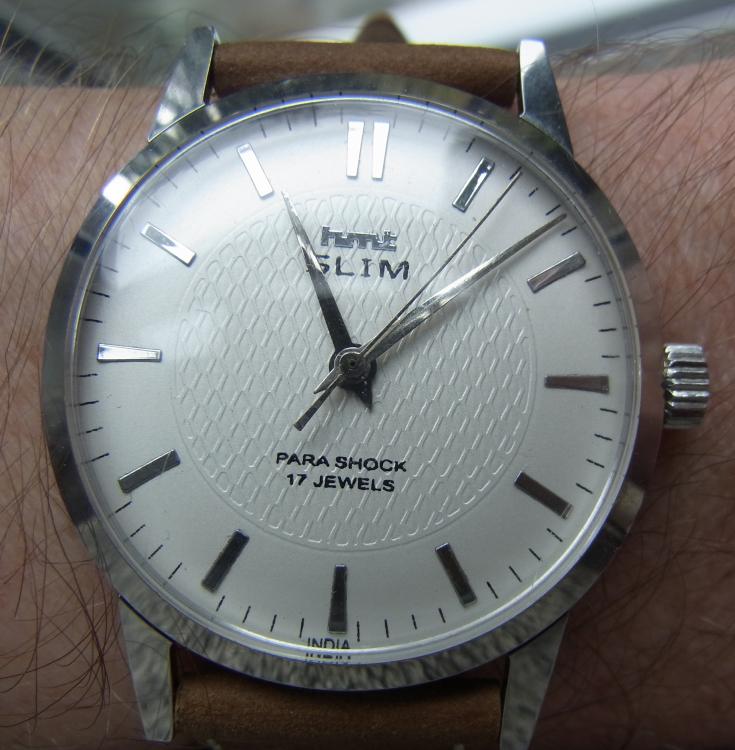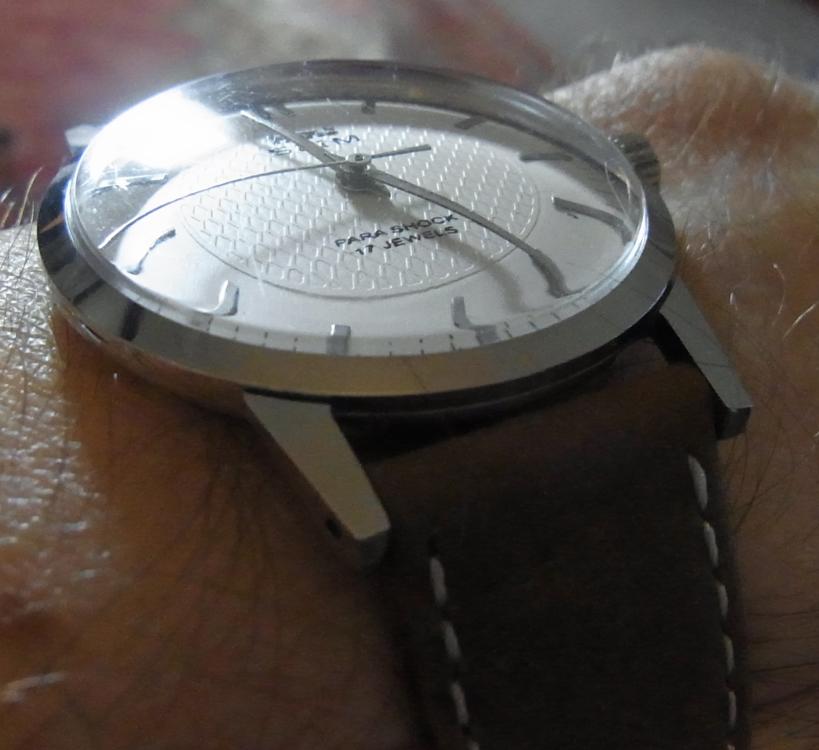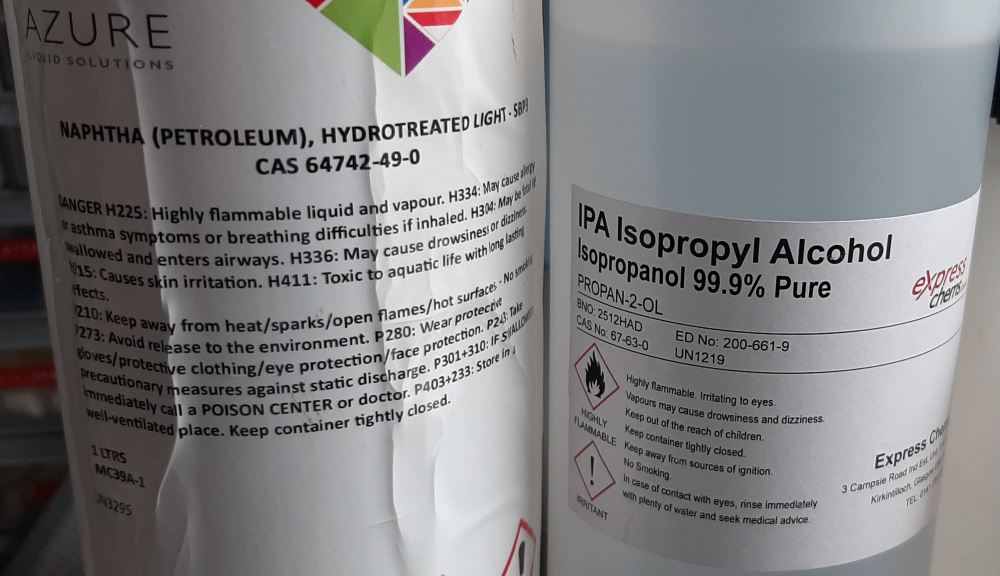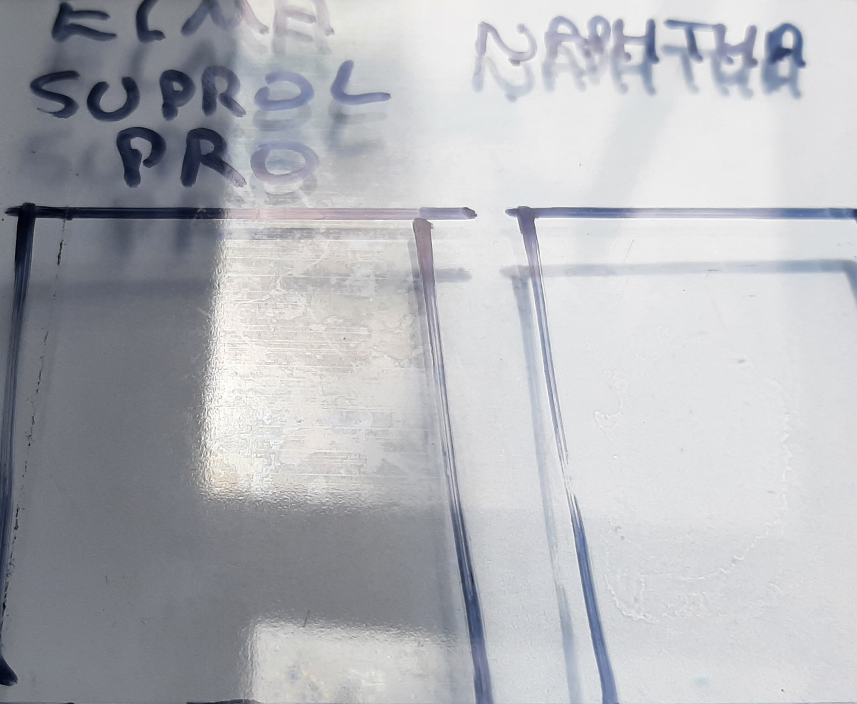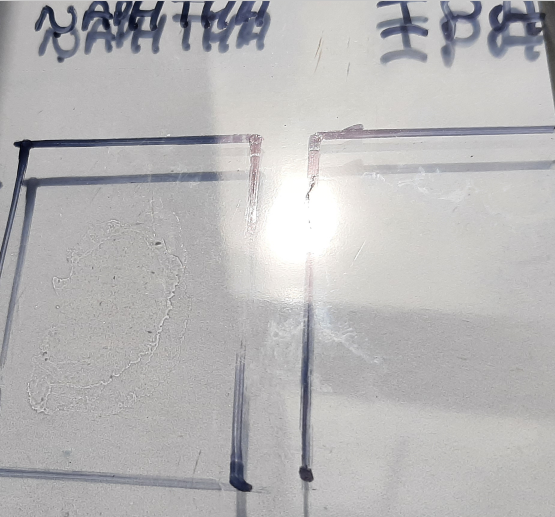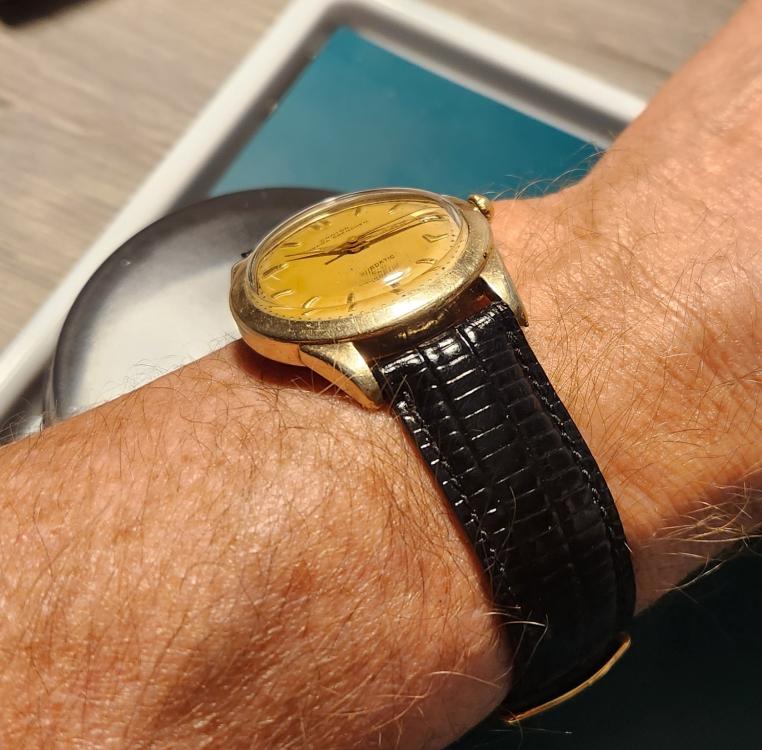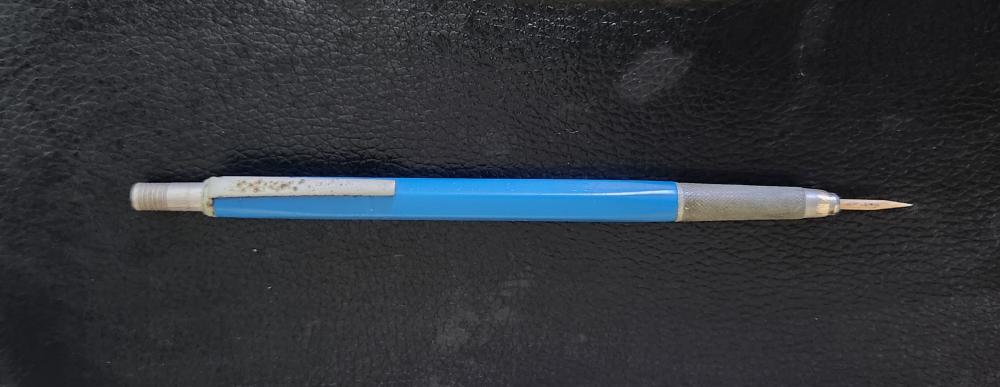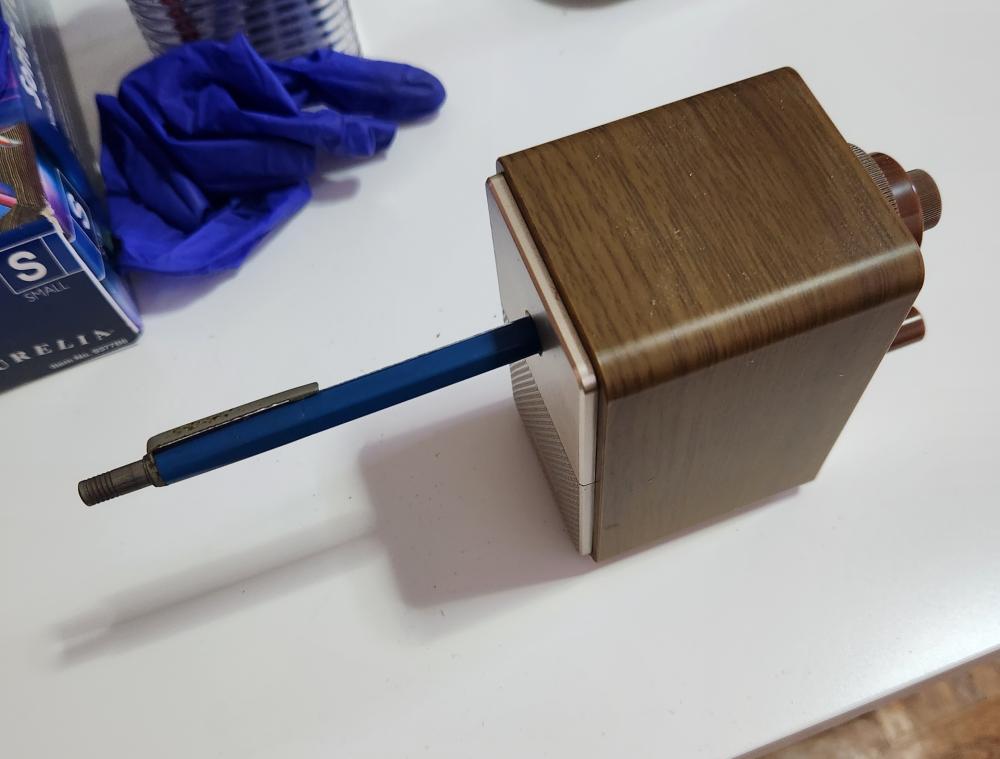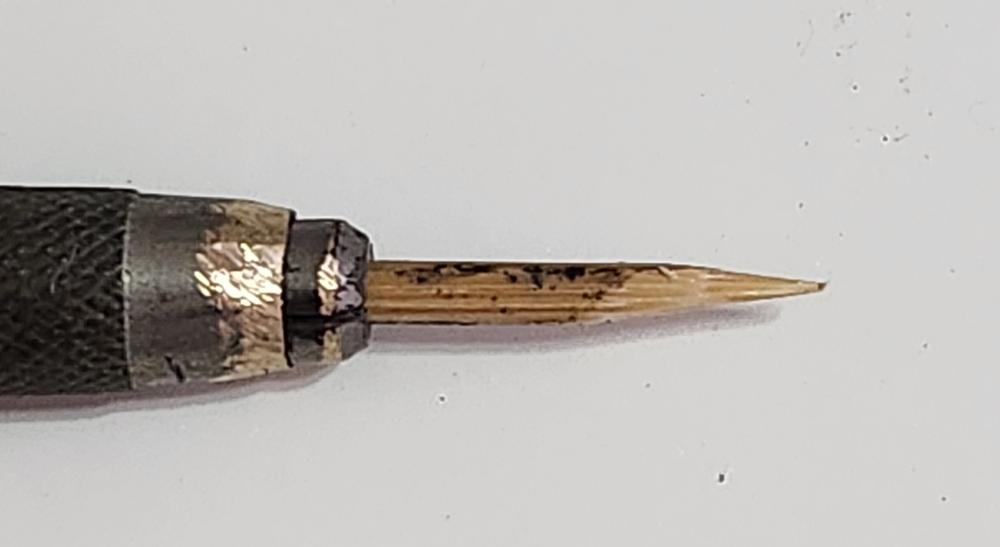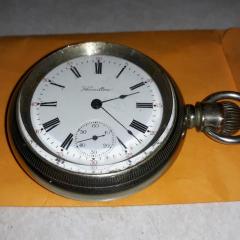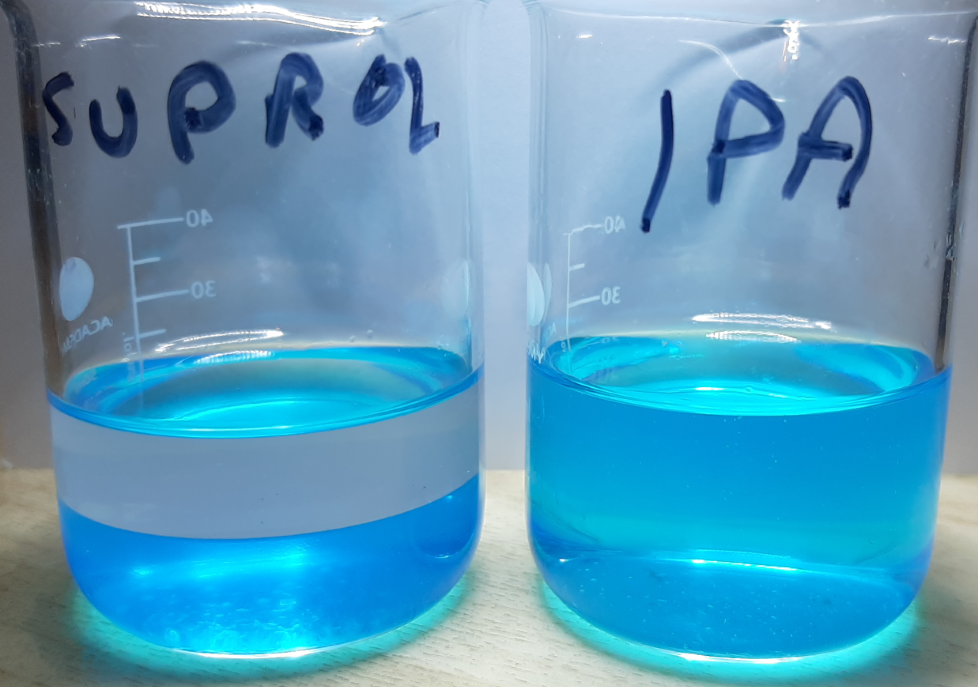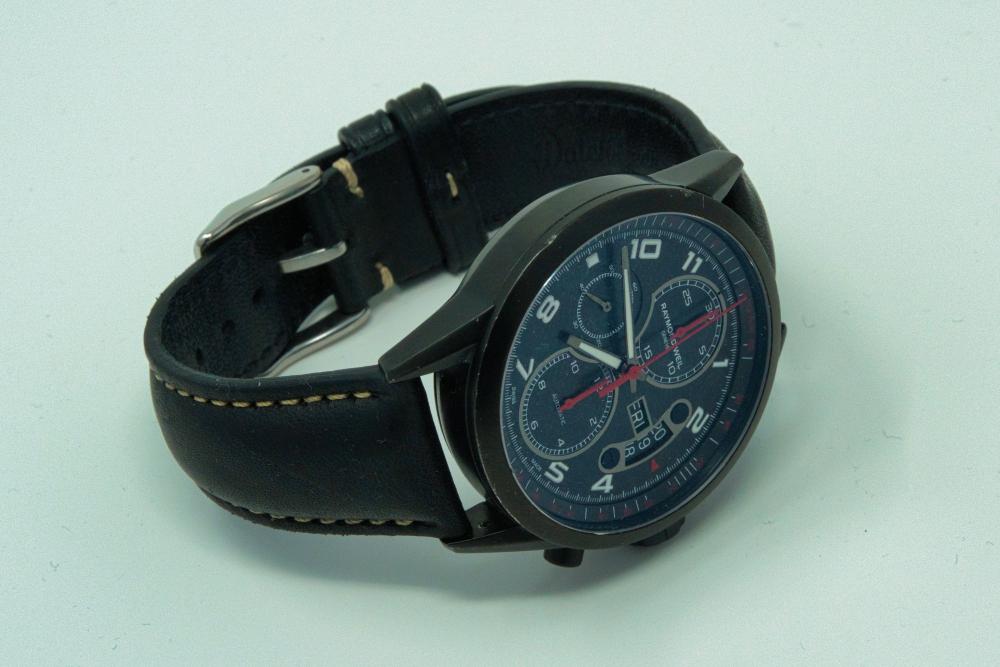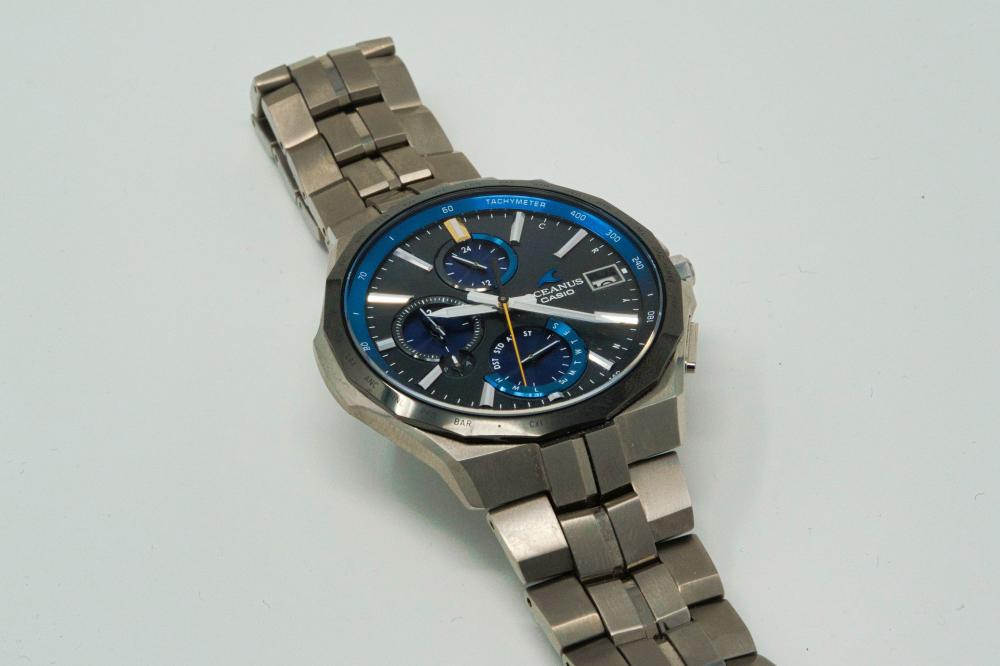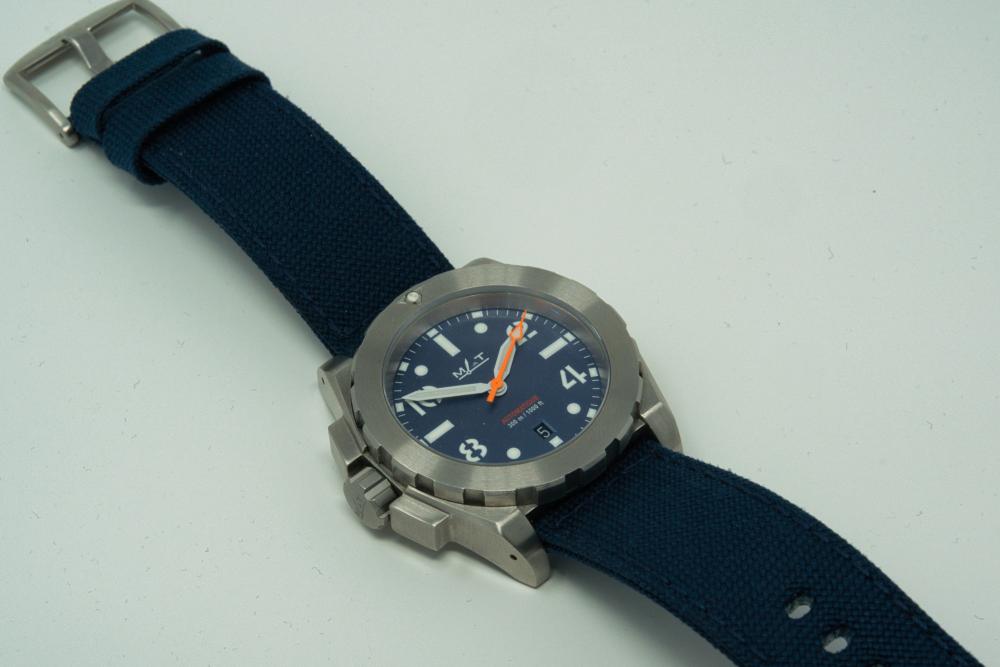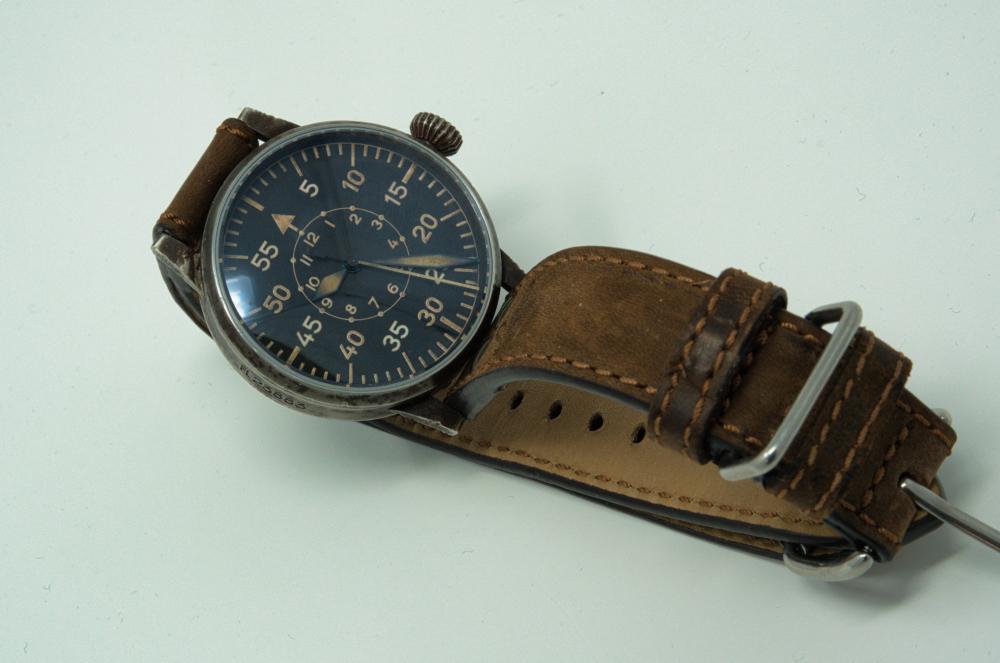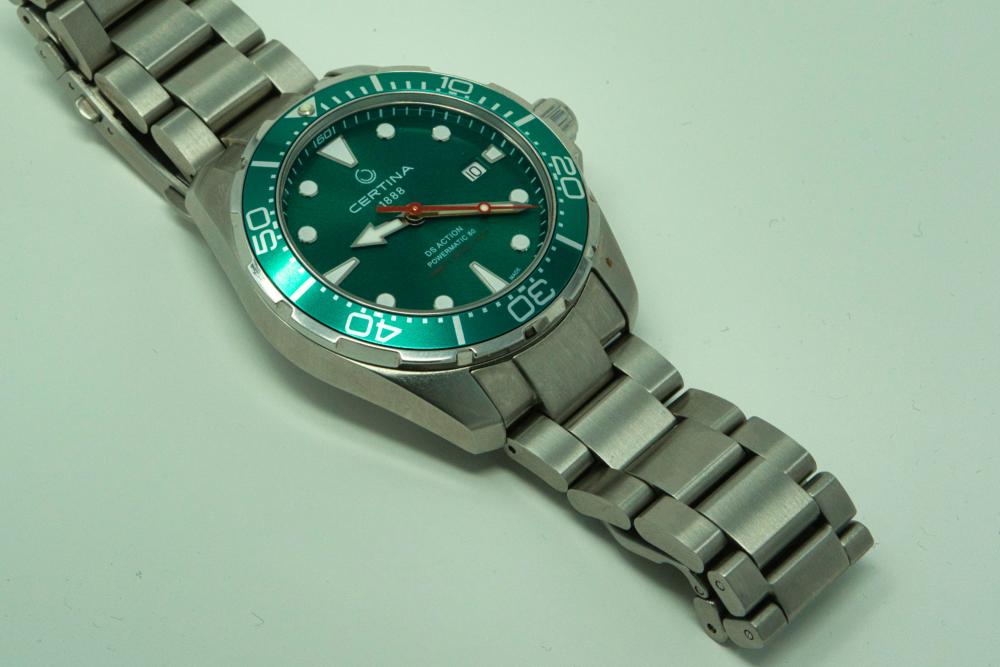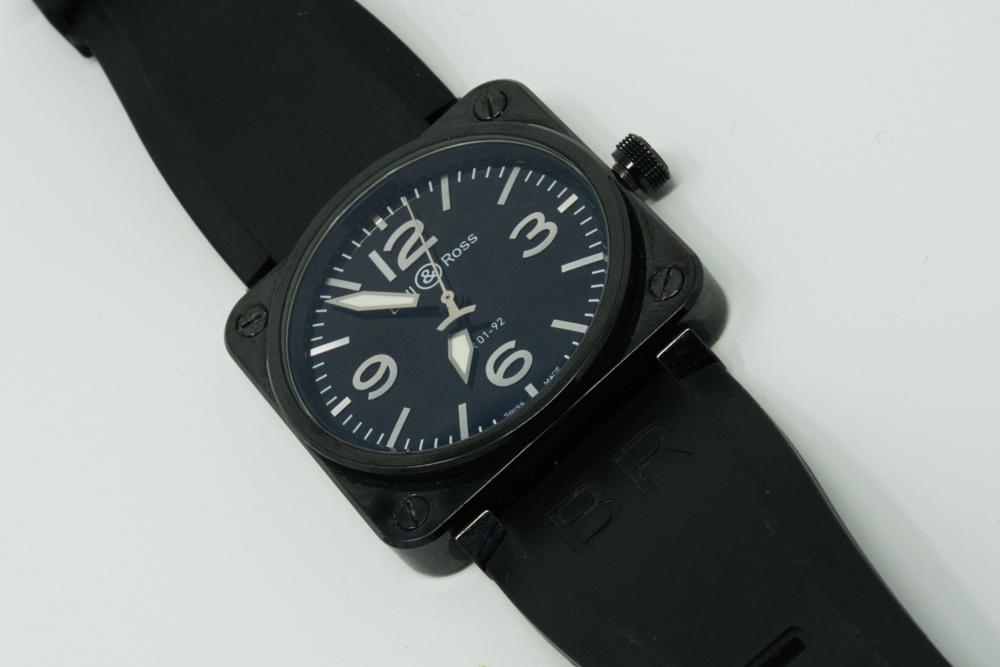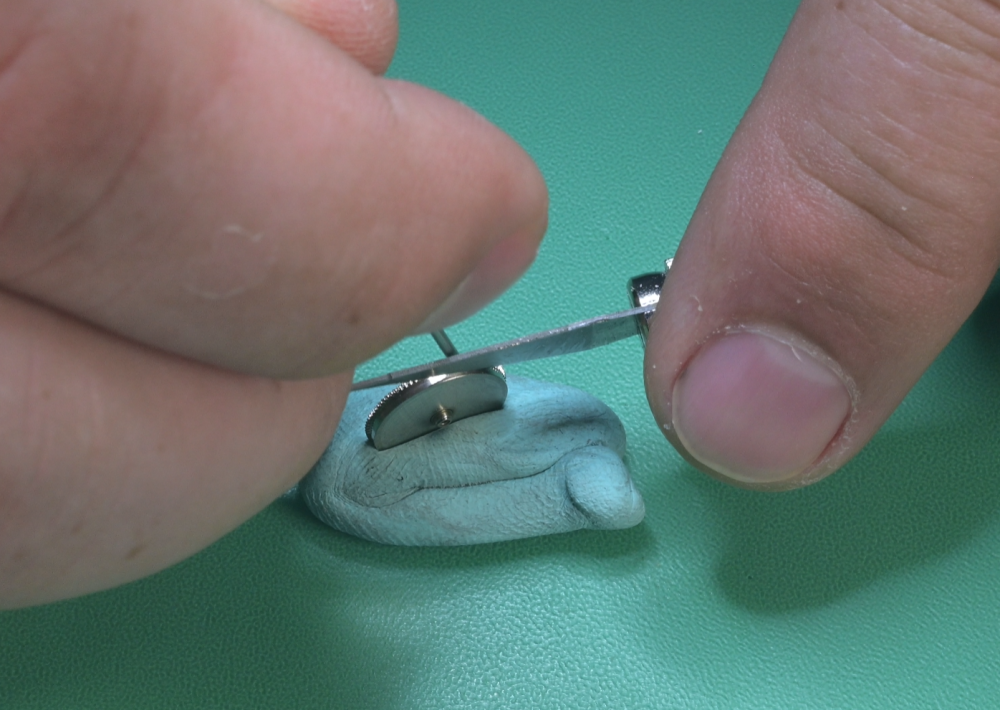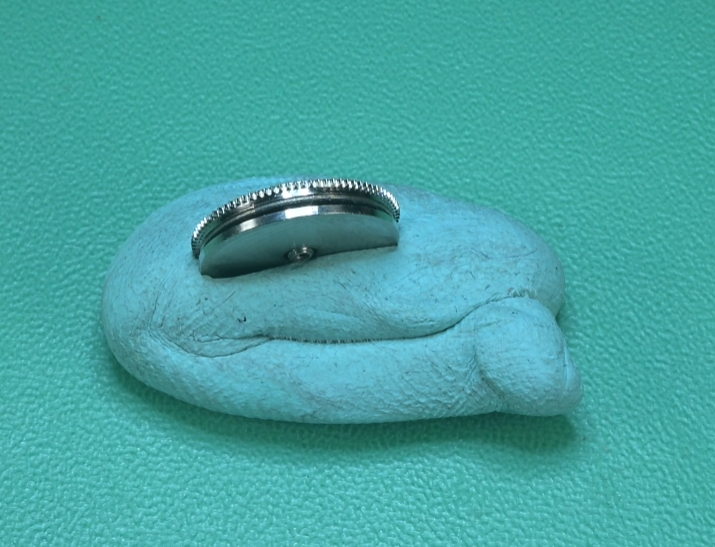Leaderboard
Popular Content
Showing content with the highest reputation on 05/01/23 in all areas
-
Thank you so much for your help everyone, especially Neverenoughwatches. Using a mixture of 'my' method (set on a metal block, prise the collet off and rotate the whole hairspring around) and your method (reach through the spring whilst it's in situ and turn the slot in the collet slightly) I've done it! Watch all back together and regulated, with only 1.8ms beat error. That'll do nicely. Probably the hardest thing I've ever done. Think I deserve that beer now...4 points
-
4 points
-
I love an experiment - so i cleaned some glass, and put puddles of Elma Suprol Pro rinse, "pure" Naphtha and 99.9% IPA. Then dried with a hairdryer. 1. There is a very slight film from the Elma, when in sunlight almost iridescent, so it must only a molecule or two thick. I guess that is why they suggest a final IPA rinse. 2 A significant residue from the naphtha, which feels oily to the touch - I can leave fingerprints in it. 3. No visible residue from IPA (the marks on the edge are where the naphtha leaked across)3 points
-
Less is more https://www.youtube.com/@therealwatchdoctor/videos3 points
-
The only one I follow is Chronoglide Watchmakers.3 points
-
2 points
-
Well done matey, it all gets easier with practise. 1.8 is not so bad on an old watch and not worth the time and risk at this stage to become more obsessive over it. Still little more than a beginner myself and know when to quit when I'm ahead2 points
-
Yes but be very careful you do not want to damage the hairspring. The stud holder is fixed it is part of the balance cock.2 points
-
I believe you should always try something for yourself, but use caution and have the mindset that it may not work. That should hopefully help you back out before you get in too deep and the proceedure potentially goes pear shaped. Morning Watchie. Theres a video somewhere kicking around that John posted a while back. I'll see if i can find it.2 points
-
that technically isn't correct. I've attached a brochure and a snippet out of the brochure. Cleaning is actually a multi-step process at technically the whole thing is cleaning. Because each step reduces the concentration of bad stuff on the parts until hopefully all the bad stuff is gone. So it isn't purely cleaning and rinsing it's basically all cleaning. It's just the first step is more aggressive at cleaning. Then if you read through the brochure somewhere they do say that the suprol Pro which is used as a rinse actually does do cleaning. So whether you using solvent or the water-based the first solution is the cleaning the primary cleaning and not even sure if that's technically correct. But the first solution has stuff for more aggressive cleaning. Then what you want to do is rinse off the solution which is now covering the plates. So everything that went in the solution is now covering everything. this means that the rinse itself is actually a cleaner it's removing the concentration a bad stuff covering everything and putting that in to solution. Then you really should do more than one rinsing. as you do want to reduce the concentration of bad stuff on the plates down to as low as you can. Then of course there are obsessed with their suprol Pro as a rinse because it also removes the concentration a bad stuff and apparently it will do a little more cleaning on the plates. But I know some people in the group object to that. So for that I would just use more water rinsing and then follow-up with isopropyl alcohol. Because you want something at the very end to take away as much of the moisture as you can and make it easier to dry. Elma Brochure_Chemistry_WatchCleaning_EN.pdf2 points
-
It's to grab the rim to twist it when truing bimetallic balances. They come in different sizes, usually with two cutouts per, yours looks like someone filed open one of them quite a bit. I'm sure they're useful but I've trued tons of bimetallic balances and never used this tool.2 points
-
This Croton Aquadatic has an ETA 1258 that was only manufactured from '53 to '55. Paired with a Speidel with a patent date of 1952, I think the wavy lines of the links and curve of the spring bar covers are a perfect match. The case back screws and the profile of this watch are beautiful! Has a case back gasket of an unusual shape with holes for the screws, tough to get a replacement I would think. Looks good on a Hamilton alligator grain over calf as well, but somehow I like the flex bracelet a tad more at the moment. The dial has a few spots but over has a nice patina as well.2 points
-
I have never enjoyed sharpening pegwood. I get wood chips all over the bench, floor, clothes and places you never even imagined. I recently found a mechanical pencil from my secondary school days. These dinosaurs use 2.0mm leads, which set me thinking.... Can I put a toothpick into it and stick it into my pencil sharpener to sharpen it? This is what I got. I just discovered that AliExpress still sells these antiques. I ordered a 3.0mm version for my pegwood.1 point
-
Hi everyone, I started out with watchmaking as a hobby some 2 years ago - basically to keep me busy during the lockdown. Lately, I've been a bit on and off with the hobby, but I plan to spend more time at my watchmaker's table again. I've started out with some pocket watches (which I butchered) and came across Mark Lovick's watch repair course. With that, I was able to accompish some first successful repairs. At the moment, I have a Seiko quartz and two citizen automatic watches I'm trying to repair. But I seem to need some help with these, which is why I decided to join you guys here in the forum! I'm looking forward to the exchange with you Kind regards1 point
-
Try running it "bare bones". Remove the hands, motion works, etc. Sometimes interference from other components can send you on a wild goose chase.1 point
-
yup. I think I commented on this and agreed saying, those little glass vials are expensive. If it doesn't have a science project growing in it, I'm using it. forget expiration dates and spending $$$ on multiples. agreed!1 point
-
1 point
-
1 point
-
Give it a try. If it turns, you're golden. If not, you'll probably want to remove the other two screws and I imagine that plate will lift off around the screw with the gear, which will then likely be able to be pulled straight out, cleaned, lubed, and reassembled.1 point
-
1 point
-
i wouldn't say jam it in there . This is watch repair, words like jam, poke ,prod ,prise,yank, rive, stick it in, rip it out are all banned . Soooo CAREFULLY PLACE a small screwdriver this might be something you have to dress the tip down to size or an oiler into the slot of the collet and gently turn. I've heard some do it from the side of the collet. The less you have to do this the better as the collet can open up becoming loose on the staff and even potentially break if its weak. Tightening the collet without the correct tools can also break it in half at the pinning point which is its weak spot. As suggested earlier by me and Nucejoe if its way off like on yours a better approach is to remove it altogether and go for a close reinstall as per Nucejoe's instructions.1 point
-
I cxnt find the posted vid from John but here is something from our very own JD https://youtu.be/wFSE16JDxfQ1 point
-
I'm interested as well. I've been using Fried and a pro for some help but rather than a disciplined approach it feels like wading into something similar to hairspring voodoo. I did manage early success on a beefy, non-compensated wheel but it was beginners luck..1 point
-
this is why the cleaning process is a multi-step process. A cleaning fluid to put everything in the solution. A variety a rinses to reduce the concentration of bad stuff down to the point where you can dry the watch and it will be nice and clean. someday I really need this study the programming of the machine at work and how many cleanings we do before we change the fluids. What about if your container of cleaning fluid is relatively large. Then the concentration a bad stuff will take over much longer time to become bad then if you had a much smaller container. so the machine at work is a Elmasolvex® VA this is a very interesting super complicated machine that does a fantastic job of cleaning. All the fluid is moved by producing a vacuum in the cleaning chamber and the fluid is drawn into the chamber. One cleaning cycle three rinse with the last one being isopropyl alcohol. Then at some point time the machine will remind us to change the fluid and conveniently it has a button which says remind me later. I'm guessing they probably change the fluid may be every six months? But how much fluid is in each of the containers? I think of the containers is round have to gallon each it looks like the specification is 2.5 L. So with a container of cleaning fluid and rents that large it's going to take a long time before the concentration becomes an issue. Usually what happens when you have smaller containers of fluid is that you change some of it on a more regular basis. In other words you keep your cleaning fluid until it no longer cleans. Then you toss the first rinse as it gets dirty then rotate all the rest of them then you fill up the last one with new rinse. So as you're not changing all the fluids all of the time. then out of curiosity I was looking at what Omega recommends. For the machine like we have it work there recommending 50 cleanings before replacing the fluids. I know we don't use ours every day so I don't actually know how many cleanings before we change the fluids. On the other hand how dirty are watches really anyway? Although on one occasion I did do a pre-cleaning of a watch that had literally been drenched in oil because I wasn't going to run it through the cleaning machine because it was really really then for the machines that use less fluid than ours they recommend 10 cycles. I would probably consider these numbers minimalistic if you're a hobbyist is trying to stretch your cleaning dollars. Probably what the real key year is to have enough rinsing cycles to reduce the concentration down until the plates are clean.1 point
-
I guess that the cleanliness of your cleaning and rinse fluids play a big part in deposits left behind - these solutions don't make the dirt and grease disappear, they simply dissolve them the same as water dissolves salt. Once the solvents evaporate they leave behind the gunk that cannot evaporate - just like the salt crystals you grew in chemistry class. Hence, if your fluid is new and what you are cleaning is relatively clean to start with the concentration of gunk dissolved in your solvent will be low and it will then leave behind less gunk when it evaporates. The opposite must therefore be true, if you have well used (dirty) solvent, the concentration of gunk will be higher and then 1 ml will leave behind more gunk than 1 ml of the same clean solvent when it evaporates. The same must be true of IPA, ethanol or other similar compounds also, not just naphtha or off the shelf cleaning solvents and rinses. If your IPA is anything but pure IPA (for example) they must leave behind what they took into solution once they evaporate leaving behind a residue. Therefore, I throw the question out there; would switching to alcohol make things better, unless you changed it very regularly..... but then you could argue the same for the oil based solvents; would they also be just as good as IPA if you change them more regularly?? Perhaps the difference is that new untainted IPA and ethanol are a single chemical and not a blend and will evaporate completely, but maybe untainted solvents like naphtha can only partially evaporate as some component(s) may not evaporate and be left behind? But as soon as the IPA touched the gunk on the first watch it is no longer pure and will dump the gunk when it evaporates, which may explain why new IPA will pass the mirror test but I suspect used IPA will not? So maybe the first few washes with IPA would be better than solvents, but I think after that there wouldn't be much difference in terms of deposits left behind? So perhaps the solution (pardon the pun) would be to change your cleaning fluid as soon as you start to see deposits, not just when the fluid in the jar starts to look like over brewed tea?1 point
-
Haha yes it is. Its just my prefered way, gives me a good visual of what I'm doing and saves having to unmount the balance each time as it can take a few attempts to get the beat close enough to be happy. Removing the balance from the cock can have its own minor risks as a beginner, so i just carried on with that same method. If it takes half a dozen attempts then thats half a dozen unmounts and remounts, i just got good at doing it this way. I know some do it with the balance hanging from a tack. Nothing wrong with the way you are doing it, two fine sharp oilers if thats all you have under the collet to gently wiggle it off. If you can manufacture something that will fit over the staff and cover the collet, a drill out toothpick could work ? to place it back down1 point
-
I would have a look for the custom jewlery places, I think there are quite a few here in Scotland so hopefully you’ll be able to find one reasonably local and ask if they would take it on. Tom1 point
-
1 point
-
Naptha is basically a mix of several mineral oils made from distilling petroleum - and oil floats on water. When I use a water based detergent in my ultrasonic and then follow it with a wash in Naptha I sometimes get little cloudy water droplets in the bottom of the container if I didn't dry off completely. Not sure why its cloudy though.1 point
-
I was thinking of an experiment today because I was suspicious of something. so to confirm my suspicion a beaker a couple of drops of food coloring in this case red little water and toss in some Naphtha. the food coloring is so we can see the water. My suspicion was confirmed that Naphtha is floating on top of the water. I not sure why it's cloudy perhaps it did absorb a tiny bit of water but it basically doesn't play well with water. In other words it looks to me like it be a very poor rinse for water-based cleaning product.1 point
-
I sometimes use an ordinary pencil sharpener to get a rough tip, but then to get the tip fine enough to go through small jewel holes, I have to work under the microscope with a sharp blade. Often it breaks off at the first use, then I have to do it again, and again. I hate pegging holes1 point
-
The only ones I regularly watch are Chronoglide and Nekkid Watchmaker.1 point
-
Wow, that does sound tricky Neverenoughwatches! While you were writing that I think I worked out another way, practicing on the old one. I took the balance off the cock and put it spring side up on a metal block with a hole drilled in (for the staff/finger) so the wheel sits flat. I'm pretty confident I can pry the collet off, rotate it to the right position, and press it back on just using two screwdrivers. Still pretty terrifying tho...1 point
-
1 point
-
Stealing time. https://www.smithsonianmag.com/history/the-time-thief-who-stole-106-rare-clocks-in-a-daring-heist-180981979/?utm_source=pocket-newtab-global-en-GB1 point
-
1 point
-
Rubber Cement is good because it drys smooth so you wont get any wrinkles in the paper dial.1 point
-
That is one of the barrels that separates from the edge, not from the top or bottom. I like to use a sharp razor and a screwdriver as leverage, but you must be VERY careful when doing it this way not to mark up the side walls of the barrel. With a light touch and steady hand they will separate. Here's one on a 7006A (same barrel as a 7009A) I did the other day.1 point
-
I assume you read the fine print on the bottle? just in case I have the image below. See what a mix the concentrate in the proper amount. Then notice what it says is to be rinsed in distilled water. This is extremely important because tapwater depending upon where you live can have bad stuff in it. So is very important to use distilled water. I don't see the wording of using naptha anywhere on the instructions? There is a reference to using their rents but their rents will apparently displace water in other words it will dissolve water I don't think naptha dissolves water. That may be a problem there.1 point
-
Repivot22 T&T&T Dean DK The best mix of entertainment and information I've found so far is Vintage Watch Services. I've not got much patience for YouTubers who can't be bothered to edit their videos down to a reasonable length, or repeatedly make the same mistakes, no matter how entertaining the patter.1 point
-
I have quite a few I follow. Not in order of preference. Chronoglide Weekend Watch Repair ddaavvee My Retro Watches Horology Biology Blair watch Project Vintage Watch Services Watch Repair Tutorials Nekkid Watchmaker Wristwatch Revival French Watch Collector Watch Wizard Service Art of Tinker Watch Repair Channel Ratfaced Git spidiq8 Richard Perret Watchmaker I shoot watches JSG watches KIM's watch repair1 point
-
No problem, just had to go looking for it. He hasn't made many videos which is a shame but he does post regularly on facebook what hes up to.1 point
-
I love this forum. I love @JohnR725 because he puts an edge on every blade. I have three vehicles not counting the John Deere Tractor. Two of them are beyond 100K miles. I do the oil changes myself. Sometimes I make a mistake and get the wrong oil, like 5W-30 vs 5W-20. I dont throw the mistake away, No. I took chemistry. Remember very little, but I do know how to do mixtures. I just mix up some 5W-23 and get the job done. Sometimes it is 5W-24. I really don't care. My truck doesn't care either. I have even skipped changing the filter when I forget to order one on Amazon! At the end of the day, the guys selling this stuff are trying to make a profit, so you have to take that into account when looking at the recommended intervals. Go look at the expiration date on that acetaminophen. Yeah, you need to toss it in the can. Nope. That sh!it will last forever. I saw a government study about efficacy of meds over time and the reality is that those expiration dates mean almost nothing. But...none of what I just said is horological. So, lets get back on track. Cleaning solutions are a mystery to me, so I just buy L&R because I worked my @ss off for so many years designing circuits, I have lots of money so I can send Ofrei a few bucks to get the bona fide stuff. I have thought about mixing my own brew but I have also thought about DIY cardiac ablation to calm down my PVCs, but there are some things you should just not try. I will end with a reference to one of my other posts. I don't buy into the five or six different oils from Moebius. I use one oil, maybe two. That is it. Good enough for my Dad, good enough for me. For anyone who reads this 30 years from now...I AM AN AMATEUR WATCHMAKER. ANY ADVICE FROM ME IS TAKEN AT YOUR OWN RISK. I leave you with this1 point





